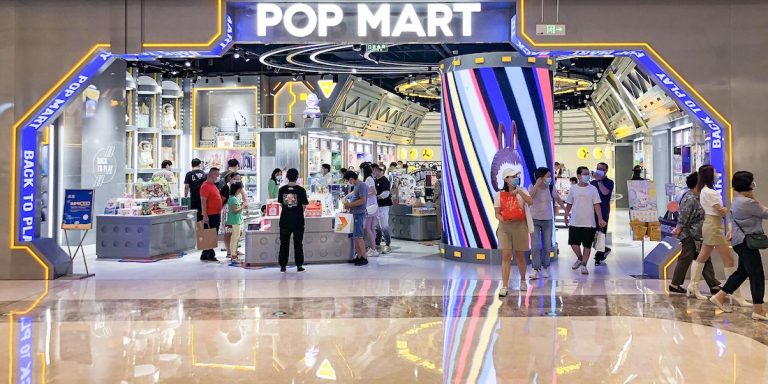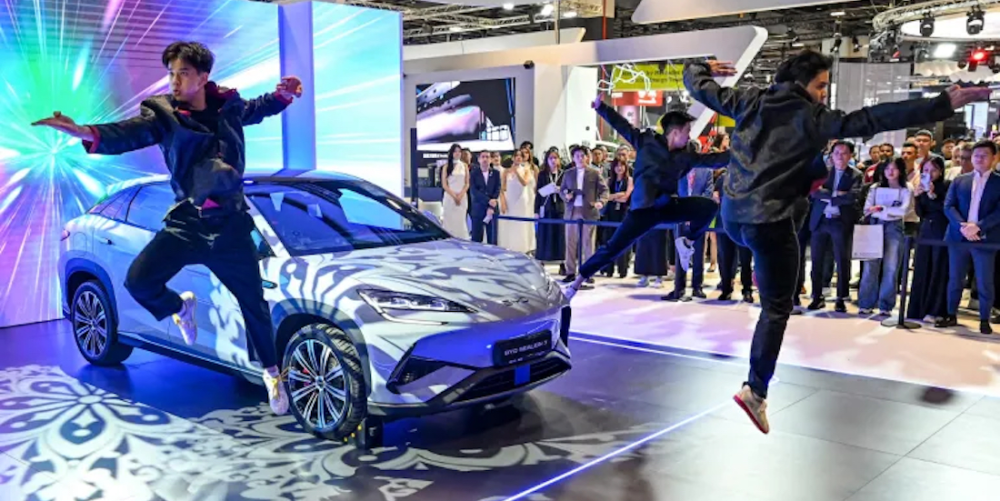
Once-Shunned “Made in China” Labels Now Drive Aspirational Consumption Across Southeast Asia
New York, N.Y. – The gleaming BYD showroom on Robinson Road represents more than just another car dealership in Singapore’s central business district. With its sleek electric vehicles displayed under bright white lights and a branded restaurant serving craft beer nearby, it symbolizes a fundamental shift in how Southeast Asian consumers view Chinese products.

Electric Vehicles Lead the Charge
BYD emerged as Singapore’s top-selling automaker in the first half of 2025, capturing nearly 20% of the city-state’s vehicle market. The Shenzhen-based company sold approximately 4,670 cars during this period, significantly outpacing second-place Toyota‘s 3,460 vehicles, according to government data.
This dominance extends beyond simple sales figures. BYD has created an ecosystem of lifestyle experiences, including restaurants and member clubs, that position the brand as aspirational rather than merely functional. The company’s vehicles feature innovative touches like built-in refrigerators and spacious, fold-flat interiors designed for sleeping—examples of what industry observers call “new China edge” innovation.
“When they innovate, they don’t follow the same lines you’d expect. It’s their way of looking at something and coming out with a completely surprising answer,” said Doris Ho, who led a brand consultancy in Greater China from 2010 to 2022.
Cultural Shift Among Young Consumers
The transformation in consumer attitudes is particularly pronounced among younger Singaporeans. Healthcare worker Thahirah Silva, 28, exemplifies this shift. Once wary of “Made in China” labels, she changed her perspective after visiting China last year.
“They’re very self-sufficient. They have their own products and don’t need to rely on international brands, and the quality was surprisingly reliable,” Silva explained. She now regularly samples Chinese food brands, often discovering them through social media trends.
Samer Elhajjar, senior lecturer at the National University of Singapore’s Business School, attributed this change to sophisticated marketing strategies developed in China’s hyper-competitive e-commerce landscape.
“Many of these brands are now perceived as cool, modern and emotionally in tune with what young consumers want. They feel local and global at the same time,” Elhajjar said. “You can walk into a Chagee and feel like you are part of a new kind of aesthetic culture: clean design, soft lighting, calming music. It is not selling a product. It is selling a feeling.”
Diverse Brand Portfolio Gains Traction
Chinese companies have established strong footholds across multiple sectors in Singapore. Tea chain Chagee, toymaker Pop Mart, and electronics manufacturer Xiaomi have all gained significant market share, while tech giants including ByteDance, Alibaba Cloud, and Tencent have chosen Singapore for their regional headquarters.
According to research firm Momentum Works, Singapore and Malaysia had Southeast Asia’s highest concentration of Chinese food and beverage brands last year, with 32 China-based firms operating 184 outlets in Singapore as of June 2024.
The success of Pop Mart‘s Labubu toys illustrates how Chinese brands are creating cultural phenomena. These gremlin-like collectibles have gained celebrity endorsements from figures like Rihanna and BLACKPINK’s Lisa, representing what 29-year-old Vietnamese migrant Ly Nguyen calls “independent creativity and a newfound confidence in Chinese-designed memorabilia.”
Strategic Geographic Advantage
Singapore’s demographics make it an ideal testing ground for Chinese brands seeking overseas expansion. With approximately 75% of the population being ethnic Chinese, the city-state offers cultural familiarity while serving as a sophisticated, internationally connected market.
“Singapore offers a sandbox with real stakes as a compact, ethnically diverse and globally-connected market,” Elhajjar explained. Success in Singapore “sends a powerful message” because the city-state is viewed as sophisticated, efficient, and forward-looking.
This strategic positioning has coincided with strengthening economic ties between Singapore and China. China has served as Singapore’s largest trading partner since 2013, with bilateral trade reaching $170.2 billion last year. As Western firms scaled back expansion plans, Chinese companies filled the void, effectively supporting Singapore’s property sector and establishing deep market presence.
Geopolitical Implications
The rise of Chinese brands reflects broader geopolitical shifts in the region. Alan Chong, senior fellow at the S. Rajaratnam School of International Studies, noted that Singapore’s government has actively courted Chinese firms amid uncertainty surrounding U.S. President Donald Trump’s policies.
“You see the positive image of the United States slipping quite consistently,” Chong observed. “The U.S. has acted in a miserly, resentful sort of way with ongoing trade tariffs, whereas China remains a factory of the world—seen as an economic benefactor.”
Singapore has also become a second home for many middle-class Chinese nationals, with significant property ownership in the city-state. Universities have introduced Mandarin-taught programs to attract Chinese students, making Singapore the second-most popular destination for Chinese students after the United Kingdom, according to China’s Ministry of Education.
Challenges and Resistance
The Chinese brand invasion has not proceeded without friction. Some Singapore residents feel alienated by stores operating primarily in Mandarin Chinese, creating tensions in a multicultural society with large Malay and Indian minorities.
Local businesses face pressure from deep-pocketed Chinese competitors. Rising rents contributed to 3,000 food and beverage business closures in 2024—the highest number since 2005. The Singapore Tenants United for Fairness, representing over 700 business owners, has called for restrictions on “new and foreign players.”
However, Leong Chan-Hoong, head of the RSIS Social Cohesion Research program, cautioned against blaming Chinese enterprises for social tensions, describing their success as part of natural market cycles in a global city-state.
Cultural Power Projection
Beyond commercial success, Chinese brands are reshaping cultural perceptions. The phenomenon of “born-again Chinese”—people of Chinese descent outside China who embrace strong pro-China identity—has gained attention from academics studying cultural influence.
Donald Low of Hong Kong University of Science and Technology defines this group as those who adopt an “idealized, romanticized” view of a China that “inevitably rises” and “stands heroically against a hegemonic West.”
For many residents, however, the growing Chinese brand presence represents simply an unremarkable aspect of daily life in a global city. As Silva noted, the ubiquity of Chinese brands makes her feel “there won’t be much difference visiting China, since so many of their brands are already here.”
The transformation suggests that Chinese companies have successfully moved beyond competing solely on price to creating genuine brand loyalty and cultural cachet—a development with implications extending far beyond Singapore’s borders as other Southeast Asian markets watch and potentially follow suit.
Summary
Chinese brands have shed their reputation for cheap, functional products to become desirable lifestyle choices among Singapore’s middle class. From electric vehicles to tea chains, these companies are reshaping consumer preferences while establishing Singapore as their regional launchpad. The transformation reflects broader geopolitical shifts as Western influence wanes and China’s economic presence grows stronger across Southeast Asia.